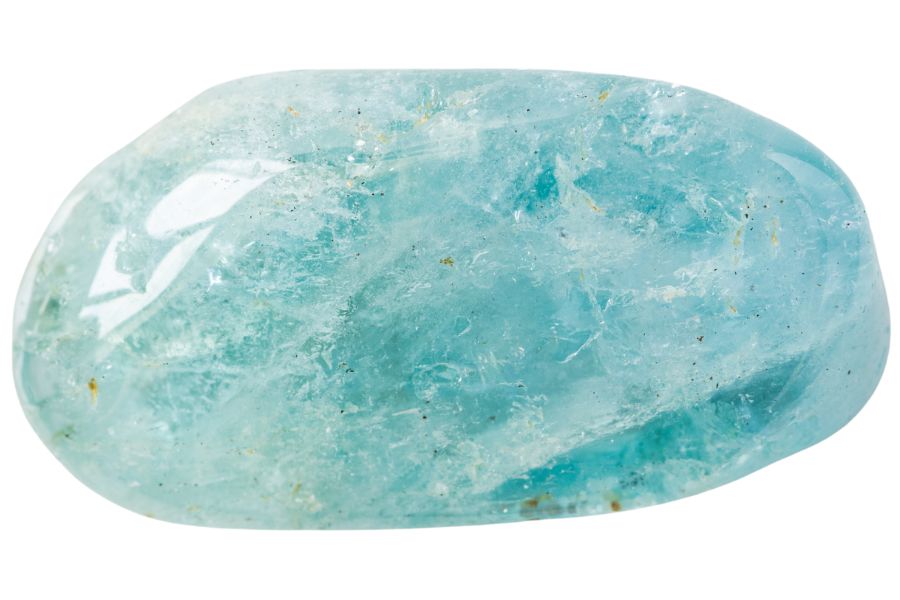New York is full of places where aquamarine gemstones can be found, from the Hudson Highlands to the Adirondack Mountains. These natural spots are perfect for anyone looking to discover the stunning blue stone.
Don’t forget about the Catskill Mountains and Shawangunk Ridge, where aquamarine might be hiding. With a bit of patience, a great find could be just around the corner in these beautiful areas.
How Aquamarine Forms Here
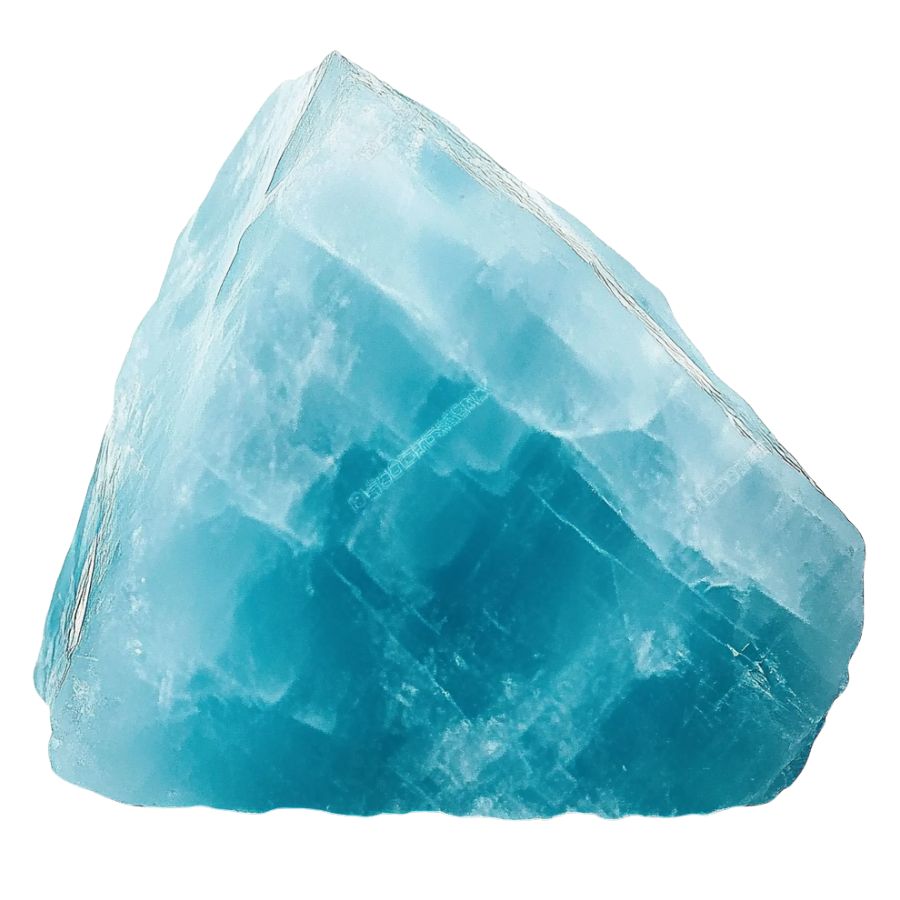
Aquamarine forms deep underground when hot fluids rich in beryllium and aluminum mix with slowly cooling magma. These minerals crystallize in hexagonal shapes as the magma cools.
The stone gets its signature blue color when tiny amounts of iron sneak into the crystal structure during formation.
The best crystals grow in pockets called pegmatites, where they have lots of room to develop. And the process takes millions of years!
The clearer and bluer the stone, the more perfect the conditions were during its formation. These gems can grow quite large, sometimes reaching several inches in length.
Types of Aquamarine
Aquamarine comes in several varieties, each with unique characteristics and value. From the prized deep blue stones to the more common lighter varieties, here’s what you need to know about different types of aquamarine.
Brazilian Aquamarine
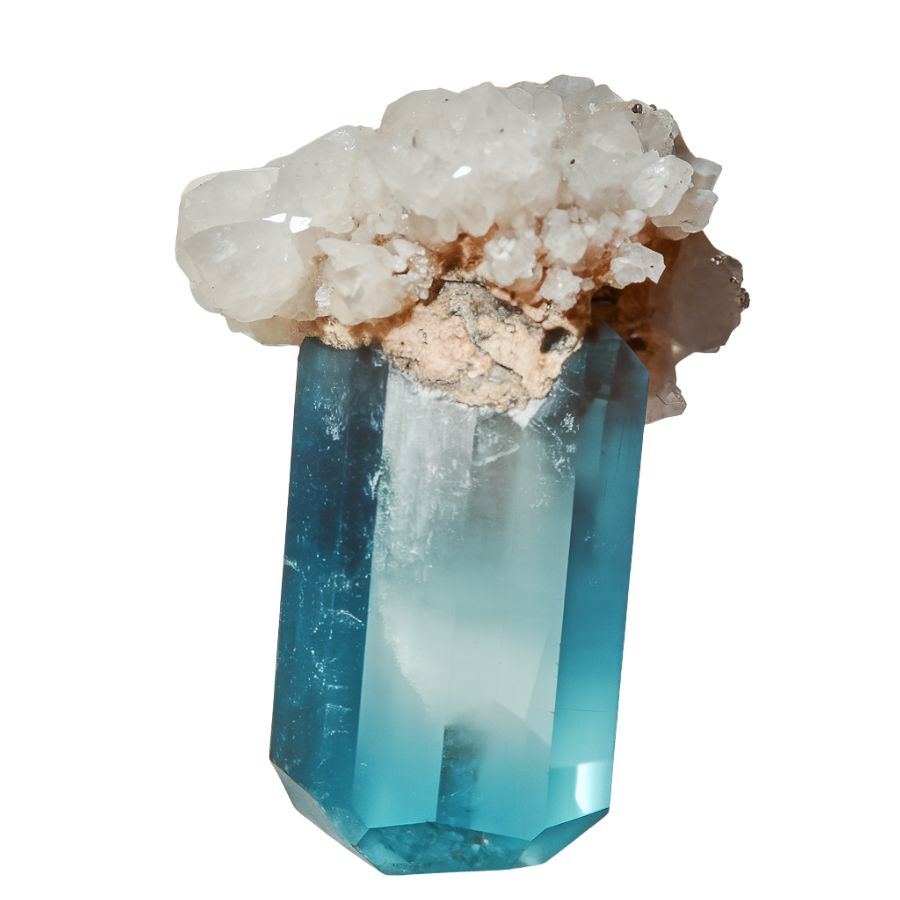
Brazilian aquamarine shows off stunning blue to greenish-blue colors that can range from subtle pastels to rich, deep shades. The stones are remarkably clear, with few or no visible flaws inside.
These stones often form in large, clean crystals that allow cutters to create impressive gems of substantial size. The clarity of Brazilian specimens is particularly noteworthy, as they typically contain fewer inclusions than aquamarines from other sources.
The colors in Brazilian aquamarine remain stable and don’t fade when exposed to light. This stability makes them especially valuable for collectors and enthusiasts.
The finest Brazilian specimens often display a pure, saturated blue color without any hints of green. These gems can achieve exceptional brilliance due to their excellent transparency and optimal cutting, making them stand out in any collection.
Moss Aquamarine
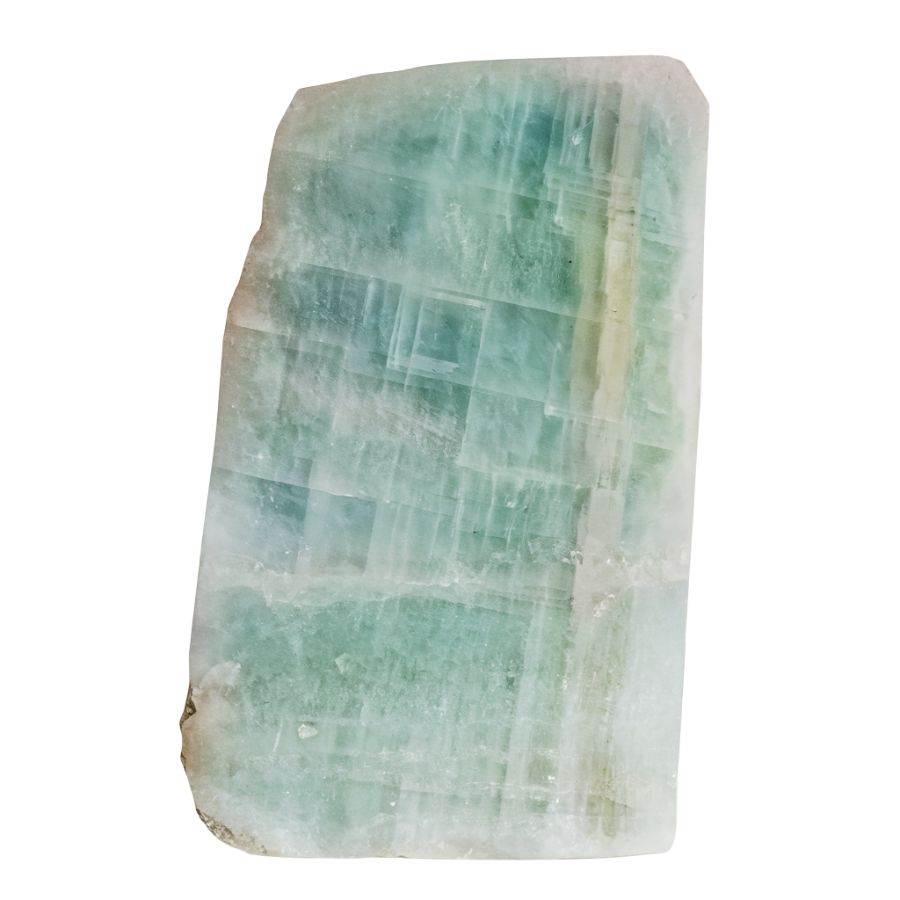
Moss aquamarine features an intriguing network of green, thread-like inclusions that create patterns resembling moss or ferns frozen in ice. These natural formations give each stone a unique character, with no two pieces looking exactly alike.
The base color ranges from pale blue to greenish-blue, but the defining feature is the presence of iron-rich inclusions that create a moss-like appearance.
Unlike clear aquamarines, moss aquamarine’s beauty lies in its internal landscape. The inclusions catch light in interesting ways, creating depth and dimension within the stone.
Some specimens show concentrated areas of moss-like patterns, while others display more scattered formations.
Milky Aquamarine

Milky aquamarine displays a dreamy, cloud-like appearance with a soft, diffused blue color. The stone’s translucent quality creates a gentle glow that seems to come from within, rather than the sharp sparkle of clear varieties.
The color can range from almost white to pale blue, with some specimens showing gentle color zoning.
These stones often have a smooth, satin-like appearance when polished, enhancing their ethereal quality. Some pieces show subtle bands or waves of color within the milky background.
When cut as cabochons, milky aquamarine displays a gentle, rolling shimmer that moves across the surface as the stone is turned. The subtle play of light through the stone’s cloudy interior creates an effect similar to moonlight on water.
Santa Maria Aquamarine

Santa Maria Aquamarine stands out for its deeply saturated blue color. The color is so intense and pure that it has become the standard for top-quality blue in aquamarines.
They possess a vitreous (glass-like) lustre and high transparency, making them visually appealing and desirable for jewelry
An interesting feature of Santa Maria Aquamarine is its color-changing ability. When viewed from different angles, it can appear colorless from one direction and deeply blue from another. This effect, called dichroism, makes each stone fascinating to observe.
Some famous Santa Maria Aquamarines include the “Martha Rocha” aquamarine, celebrated for its stunning blue hue and clarity, which gained attention in the 1950s.
Bauchi Aquamarine

Bauchi Aquamarine shows a distinctive soft ice-blue color that looks gentle and soothing. The color reminds many people of a winter sky or frozen lake.
One of the unique aspects of Bauchi Aquamarine is its hexagonal crystal structure. The crystals can grow quite large, sometimes exceeding a foot in length, which is impressive compared to many other gemstones.
Additionally, while most aquamarines are known for their pale blue to light green colors, Bauchi Aquamarine maintains a consistent soft blue tone that appeals to collectors looking for specific color attributes.
Furthermore, the increasing recognition of African aquamarines in the global market has contributed to the popularity of Bauchi Aquamarine as a collectible stone.
Cat’s Eye Aquamarine

Cat’s Eye Aquamarine shows a remarkable visual effect – a bright line of light that moves across the surface like a cat’s eye. This effect comes from tiny parallel tubes inside the crystal that reflect light in a concentrated band.
The color of Cat’s Eye Aquamarine typically ranges from blue to greenish-blue, reminiscent of ocean waters.
The stone’s most fascinating feature is how the light band moves when you rotate the stone. This movement creates a dynamic, living quality. The sharper and more defined this light band is, the more valued the stone becomes.
The best specimens show a perfectly straight, bright line against a smooth, silky background. The effect is most dramatic when the stone is cut as a smooth dome shape.
São Domingos Aquamarine
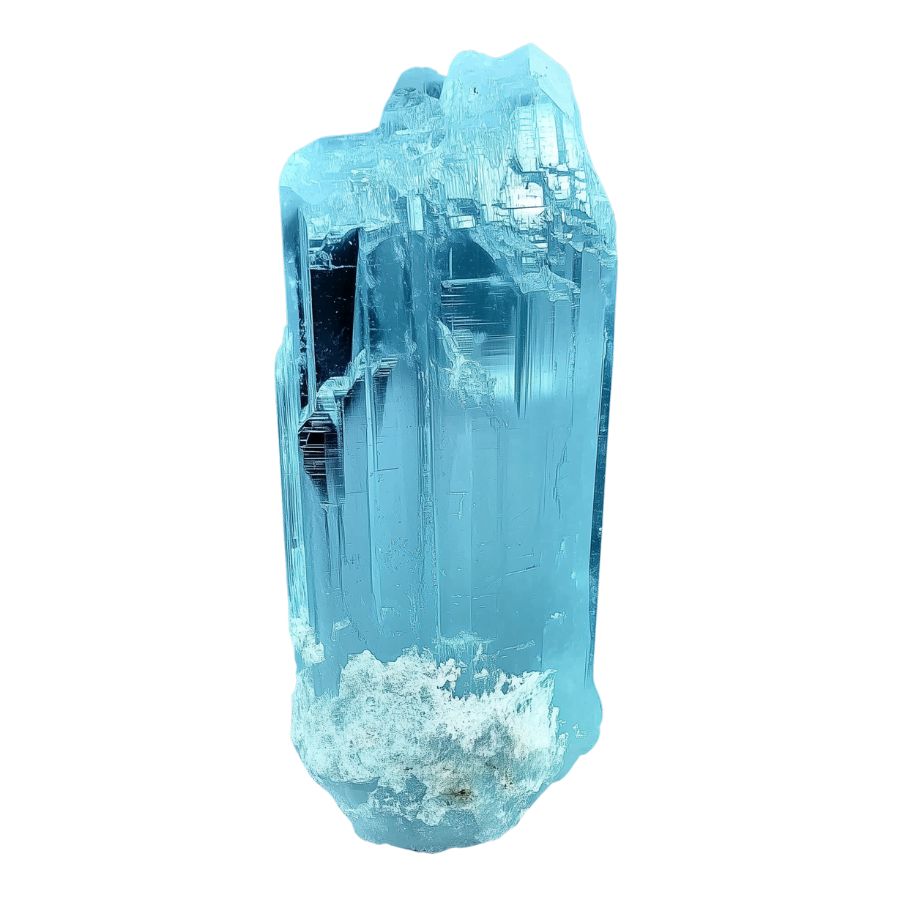
São Domingos Aquamarine shows a gentle pastel blue color that’s soft and soothing to the eye. The color has a delicate quality that makes it perfect for people who prefer subtle beauty.
Its pastel shade allows for versatile use in various designs, appealing to both traditional and modern tastes in gemstone jewelry.
The stone maintains its pastel shade consistently throughout the crystal. This even distribution of color is special because many other aquamarines can show patches or zones of different color intensities.
One unique aspect of the São Domingos Aquamarine is its origin story; it was discovered by chance on a cattle farm, giving it a distinct narrative compared to other aquamarines that are often associated with specific mining locations or historical significance
Tatu Aquamarine

Tatu Aquamarine shows a pure, sea-blue color. The purity of color makes it special. These stones often grow into large, perfectly formed crystals. The six-sided shape is clear and well-defined, even in natural pieces. This regular crystal growth leads to stones with excellent clarity and shine.
A notable feature of Tatu Aquamarine is how clean it looks inside. Most pieces have very few internal marks or inclusions. This clarity lets light travel through the stone smoothly, creating beautiful sparkles and flashes.
The stone’s natural blue color doesn’t need any treatment to look good. It comes out of the ground with its beautiful color ready to show. This natural beauty makes each piece special and valuable to collectors who appreciate untreated stones.
What Rough Aquamarine Look Like?
Aquamarine in its natural form can be tricky to identify, but once you know what to look for, it’s pretty distinctive. Here’s how you can spot rough aquamarine:
Look for the Distinct Blue-Green Color
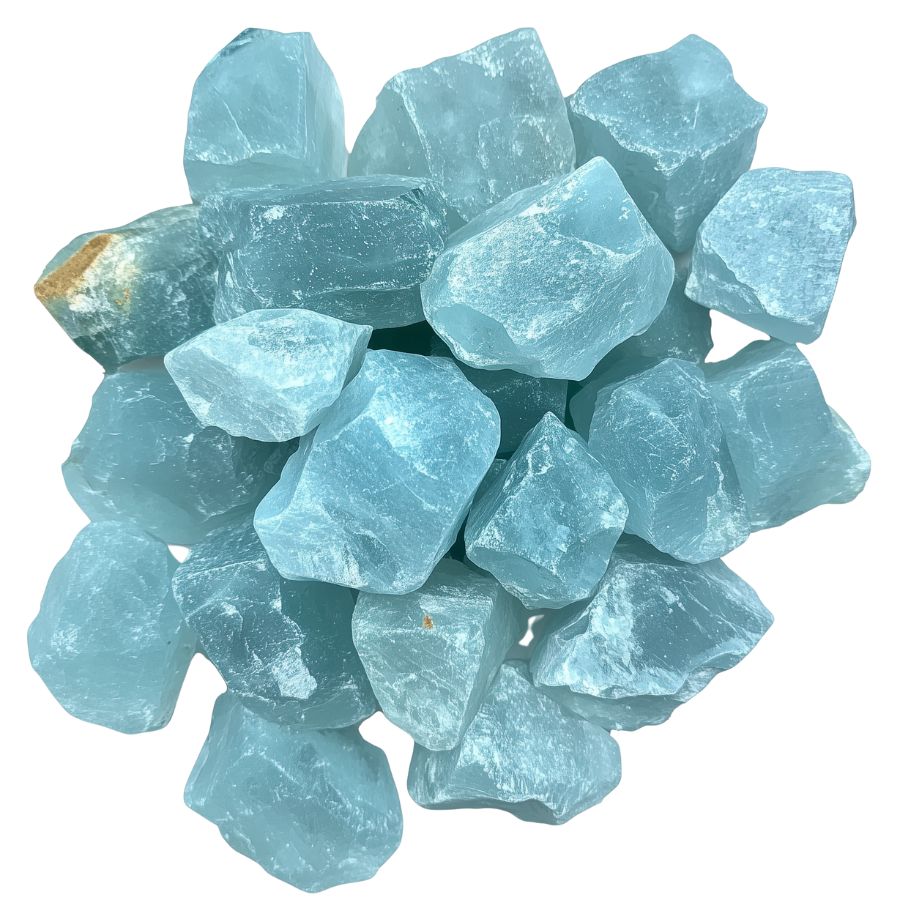
Raw aquamarine typically shows a pale blue to blue-green color, like seawater. You’ll notice it’s not as intense as blue topaz. The color might appear unevenly distributed or zoned within the crystal.
Here’s a pro tip: hold it up to natural light – genuine aquamarine often shows stronger color from certain angles. If it’s too dark or too perfect, it might be glass or another mineral.
Check for Hexagonal Crystal Structure

Natural aquamarine forms in six-sided (hexagonal) crystals. Even in rough form, you can spot these geometric patterns. Sometimes they’re perfect columns, but often they’re broken or abraded.
Run your finger along the sides – you should feel subtle ridges where the crystal faces meet. Fake stones rarely show this distinctive crystal habit.
Examine Surface Texture and Transparency

Raw aquamarine has a specific vitreous (glass-like) luster, but it’s not as shiny as glass. Look for small natural etchings on the surface – they look like tiny triangular impressions.
Most pieces are translucent to transparent, letting some light through. If it’s completely opaque or too perfectly clear, be suspicious.
Test for Pleochroism and Inclusions

Hold the stone up and rotate it slowly. Genuine aquamarine shows different shades of blue when viewed from different angles (pleochroism).
Through a loupe or magnifying glass, look for tube-like or parallel needle inclusions – these are telltale signs of natural aquamarine. Also, small liquid bubbles are common and good indicators of authenticity.
A Quick Request About Collecting
Always Confirm Access and Collection Rules!
Before heading out to any of the locations on our list you need to confirm access requirements and collection rules for both public and private locations directly with the location. We haven’t personally verified every location and the access requirements and collection rules often change without notice.
Many of the locations we mention will not allow collecting but are still great places for those who love to find beautiful rocks and minerals in the wild without keeping them. We also can’t guarantee you will find anything in these locations since they are constantly changing.
Always get updated information directly from the source ahead of time to ensure responsible rockhounding. If you want even more current options it’s always a good idea to contact local rock and mineral clubs and groups
Tips on Where to Look
Aquamarine can be found in various accessible locations if you know where to look. Below-mentioned practical tips will help you locate areas where aquamarine naturally occurs.
Stream Beds and Rivers

Look for places where water flows over rocks regularly. Aquamarine often breaks from its host rock and gets carried downstream. Check gravel bars and sandy areas where water slows down.
The best spots are just after a bend in the river where heavy minerals get trapped. Use a sieve or pan to sort through sediments. Pro tip: search after heavy rains when new material gets washed down.
Pegmatite Outcrops
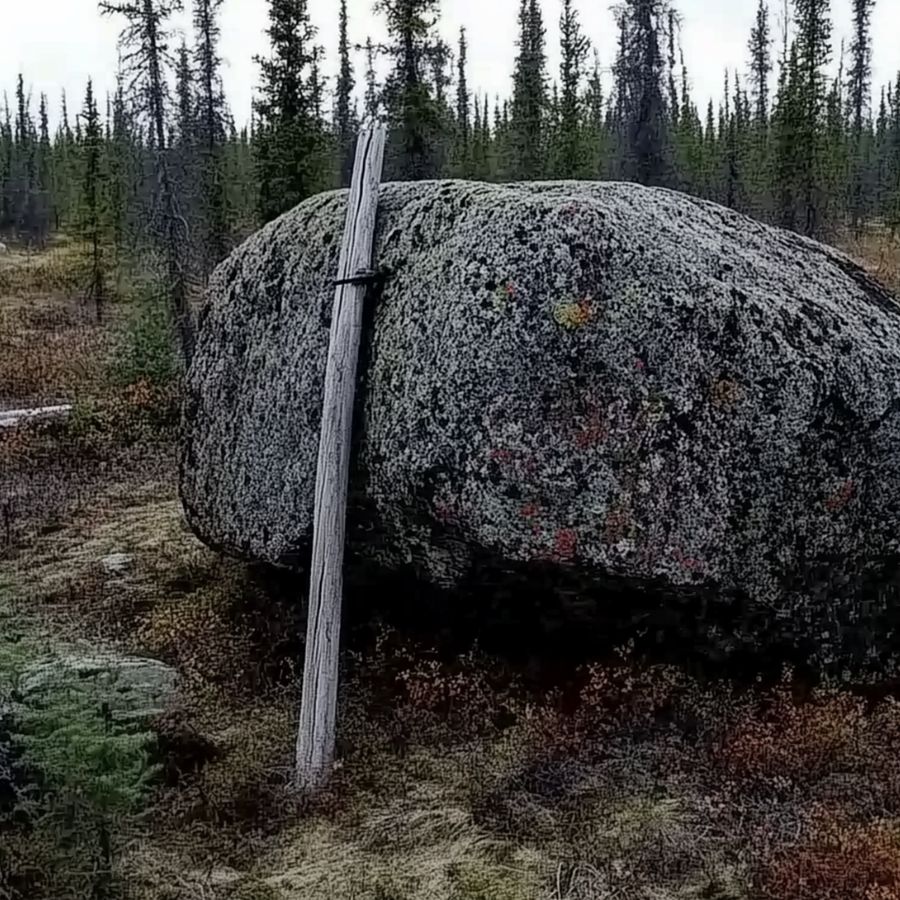
Pegmatites are coarse-grained rocks that often contain large crystals of various minerals, including aquamarine, which typically forms in these igneous rock formations when mineral-rich fluids cool slowly deep within the Earth, allowing beautiful hexagonal crystals to develop over time.
Look for white or pink rocks with large crystals – that’s pegmatite. Check weathered surfaces and cracks. Aquamarine crystals often stick out from eroded areas.
Old Mining Areas

Hit up abandoned mica or feldspar mines. Check mine dumps and tailings piles. Lots of overlooked gems there. Bring a UV light – aquamarine sometimes fluoresces. Look for hexagonal crystals with glassy luster.
Tools needed: rock hammer, safety glasses, small shovel. Mine owners sometimes allow collecting for a fee.
Mountain Slopes
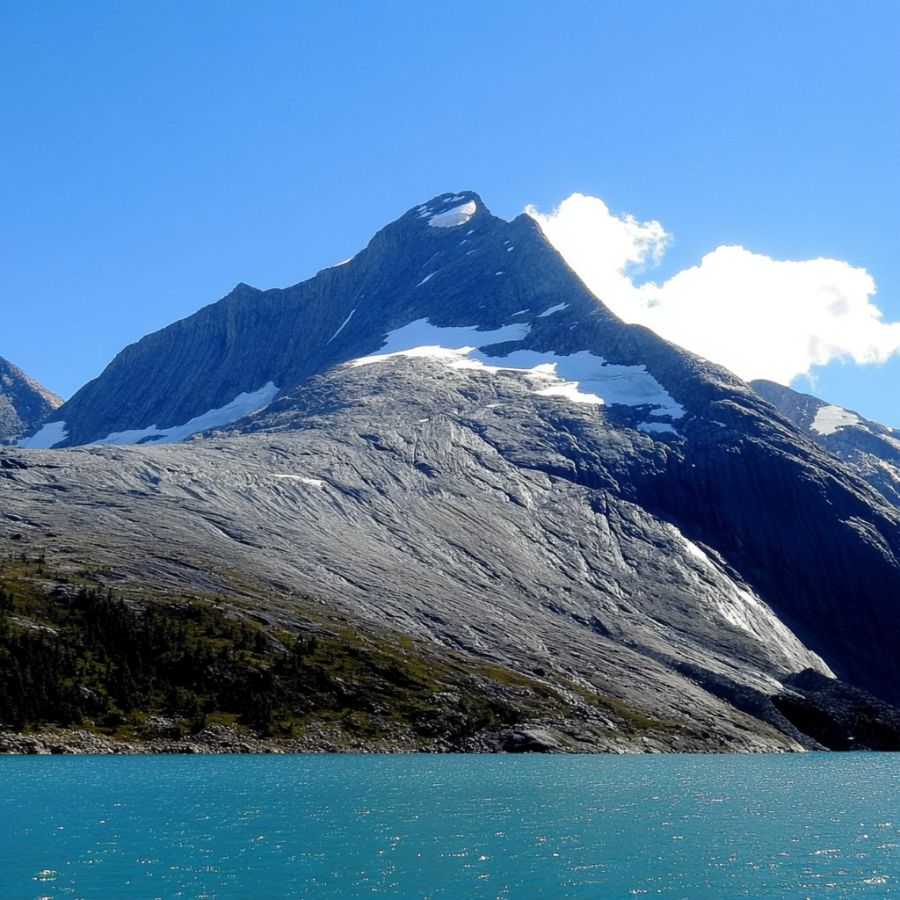
Focus on granite areas. Check scree slopes (loose rock piles). Look after rain. Stones are more visible when wet. Scan for pale blue or greenish crystals.
The best time is spring after snow melt exposes new material. Important Note: avoid steep slopes, stick to accessible areas.
Some Great Places To Start
Here are some of the better places in the state to start looking for Aquamarine:
Always Confirm Access and Collection Rules!
Before heading out to any of the locations on our list you need to confirm access requirements and collection rules for both public and private locations directly with the location. We haven’t personally verified every location and the access requirements and collection rules often change without notice.
Many of the locations we mention will not allow collecting but are still great places for those who love to find beautiful rocks and minerals in the wild without keeping them. We also can’t guarantee you will find anything in these locations since they are constantly changing.
Always get updated information directly from the source ahead of time to ensure responsible rockhounding. If you want even more current options it’s always a good idea to contact local rock and mineral clubs and groups
Lake Pleasant
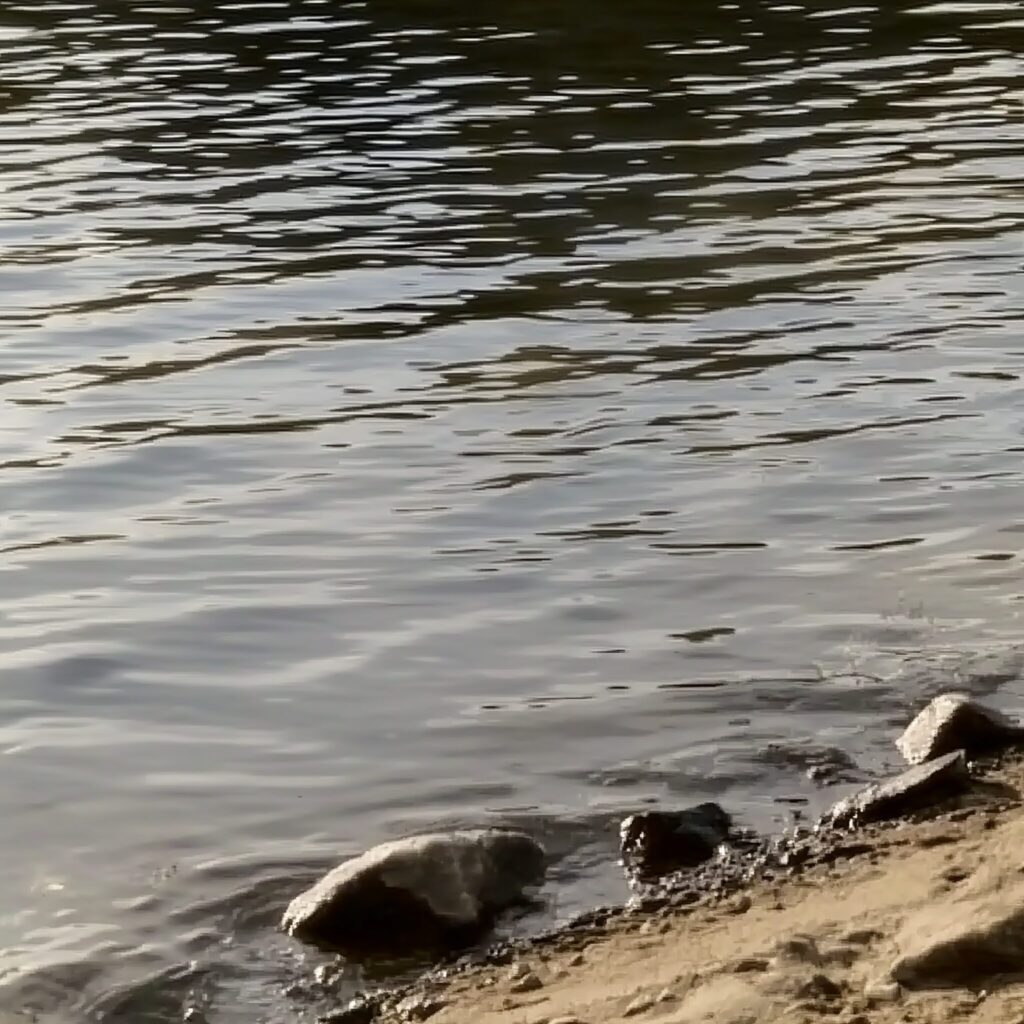
Lake Pleasant, situated in the Adirondack Mountains of New York, is a promising location for those searching for aquamarine. The area’s rugged landscape and glacially carved valleys create the right conditions for uncovering this gemstone.
Exposed bedrock along the lake’s shores, especially where cliffs meet the water, is a key place to check. These spots contain mineral-rich deposits, and natural erosion can bring aquamarine to the surface.
Old mining sites around the lake also offer good opportunities, as previous excavations may have left behind overlooked specimens. Streams and creek beds flowing down from the mountains can be productive as well, with water gradually revealing hidden minerals.
Since the terrain is rough, wearing sturdy footwear and bringing the right gear is essential. Searching after a rainstorm can improve the chances of finding aquamarine, as wet conditions make newly exposed stones easier to spot.
Staten Island
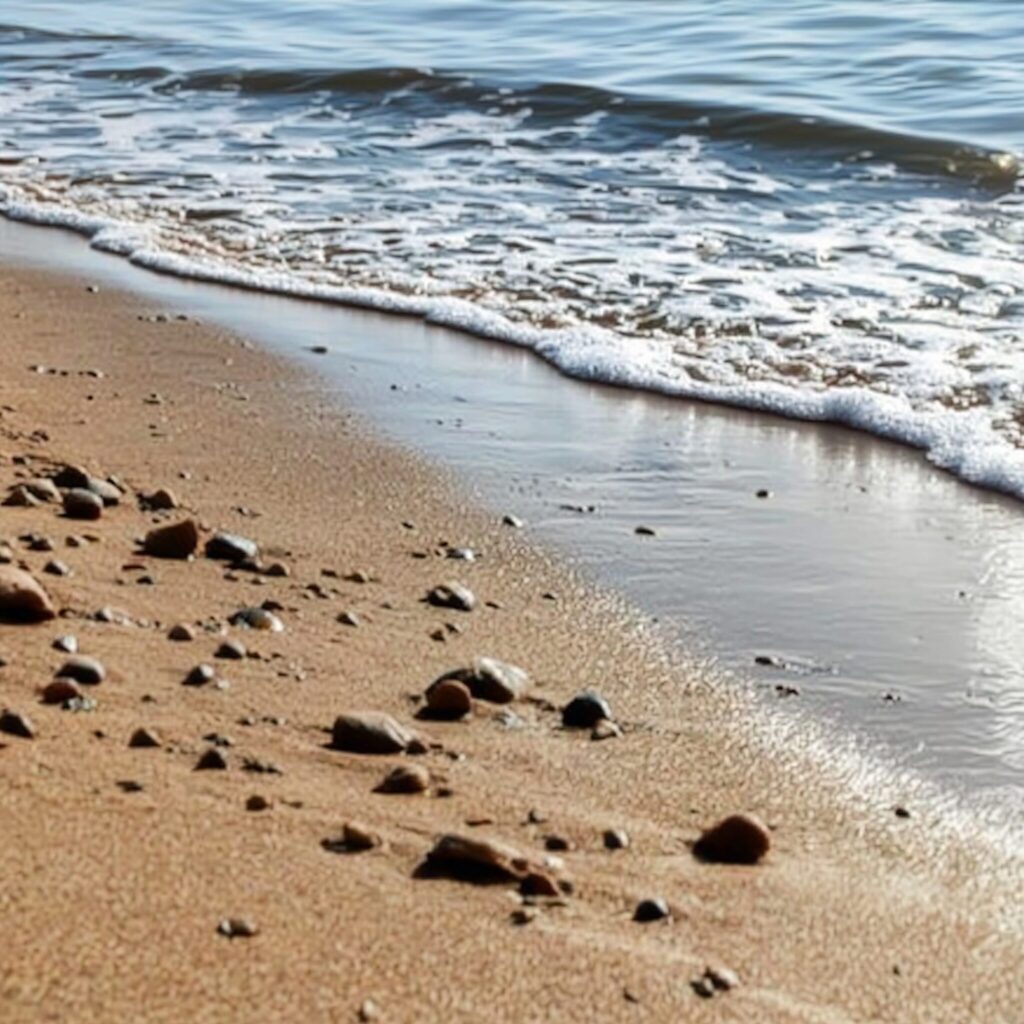
Staten Island may not be the first place associated with aquamarine, but it holds some unexpected opportunities for mineral collectors. The Staten Island Greenbelt, particularly its freshwater streams and rocky outcrops, can yield small aquamarine specimens.
Exposed rocks and creek banks, such as those along Richmond Creek, are good areas to search. Mineral-rich soil in these locations can sometimes conceal aquamarine, waiting to be uncovered by erosion.
The best chances of finding aquamarine come from areas with weathered, exposed rock formations. Checking the edges of rocky outcrops and disturbed soil, especially after rainstorms, can help reveal hidden stones.
While Staten Island isn’t known for large aquamarine deposits, patience and careful searching can still lead to worthwhile finds. With the right approach, collectors may come across small but valuable pieces in these overlooked locations.
Bedford
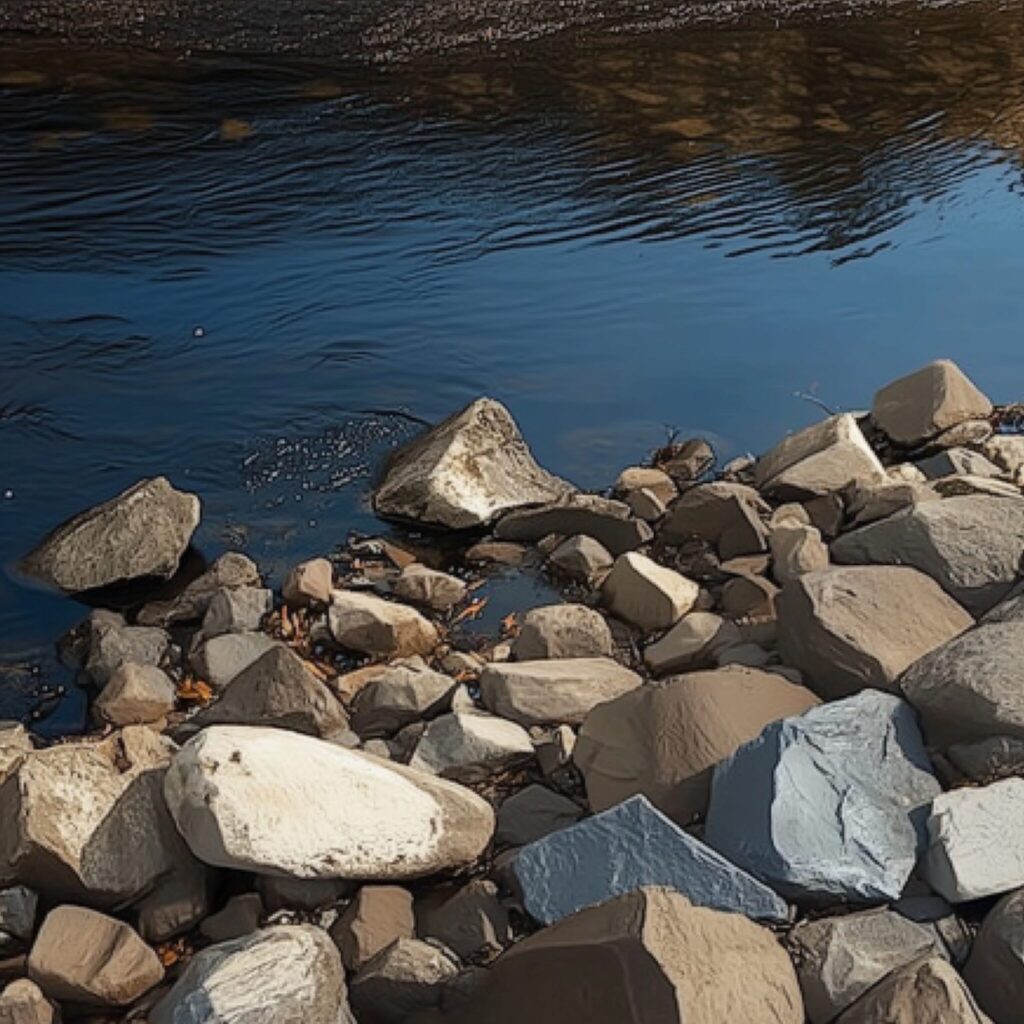
Bedford, in Westchester County, offers a rewarding search for those interested in aquamarine. The rocky terrain around Bedford Hills, particularly near old quarries, has produced this gemstone within veins of granite and metamorphic rock.
Exposed areas along the Saw Mill River and near the Bedford Village Historic District are worth exploring. Natural erosion in these spots can sometimes bring aquamarine to the surface, making them promising locations for collectors.
Creeks and riverbeds are key areas to check, as water movement helps transport and expose loose stones. Looking closely at rocks for blue-green inclusions can make it easier to identify aquamarine hidden among other minerals.
Rain can improve the chances of finding specimens by washing away soil and uncovering fresh material. With careful searching and patience, Bedford’s mineral-rich landscape may reveal some rewarding discoveries.
Coeymans

Coeymans, a riverside town in Albany County, provides a promising spot for those searching for aquamarine. The rocky hills and streambeds surrounding the area contain a diverse range of minerals, including this sought-after gemstone.
Exposed rock faces and former quarry sites near Coeymans Landing are worth investigating. Over time, natural weathering has helped unearth minerals, making these locations ideal for discovery.
Granite and schist formations are good indicators of where aquamarine might be found. Streams and riverbanks, particularly near Coeymans Creek, are also prime areas to explore, as erosion can reveal hidden stones.
Rain can enhance the search by clearing away loose soil and exposing new finds. With patience and close observation, collectors may come across aquamarine crystals tucked within the rugged terrain of Coeymans.
Andover
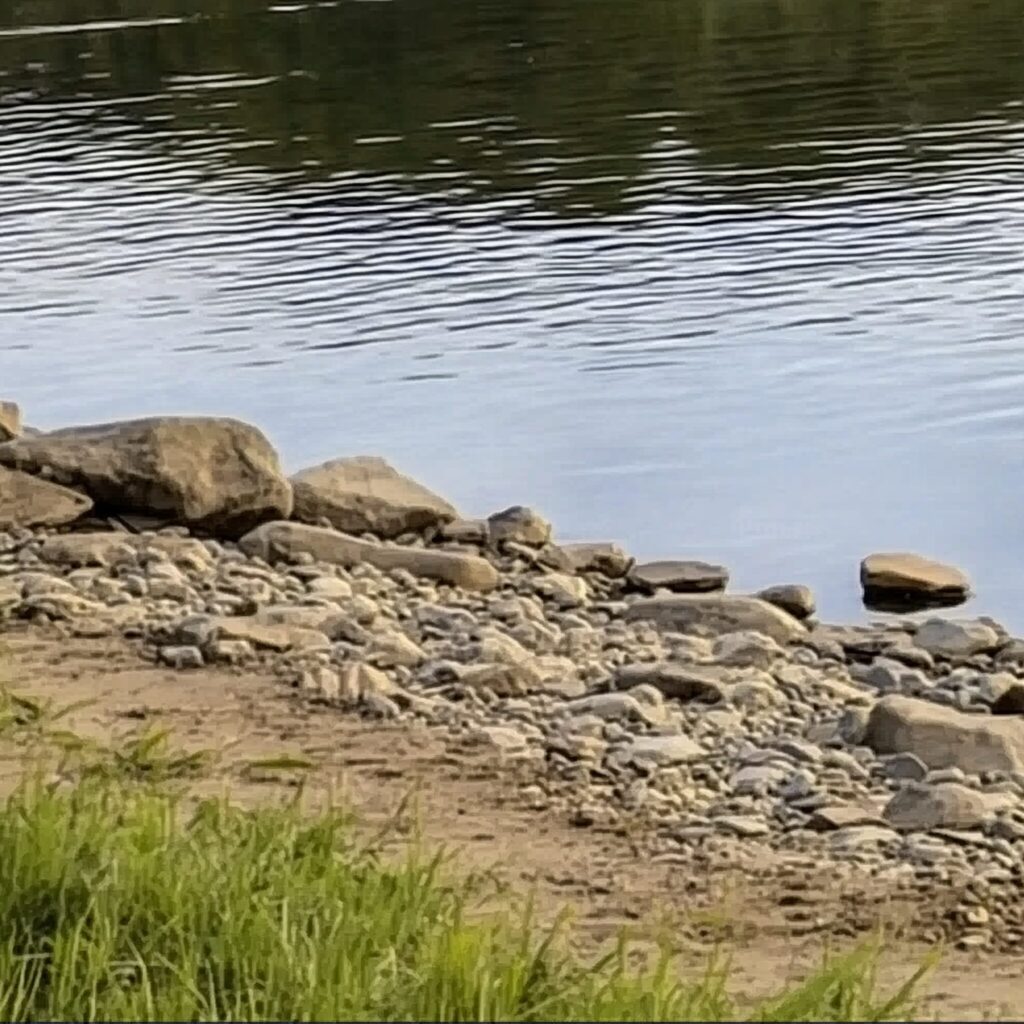
Andover, in southern New York, is an underrated location for those searching for aquamarine. The rolling hills and historic quarries surrounding the town hold a variety of minerals, including this prized gemstone.
The best places to explore are the old slate and marble quarries, as well as the rocky creeks near Andover Gorge. Erosion in these areas has gradually uncovered minerals, making them ideal for discovery.
Checking exposed rock layers near the quarries and along riverbeds, such as those near the Genesee River, can improve the chances of finding aquamarine. This gemstone is often embedded in granite or along natural fault lines, so closely inspecting loose and weathered rocks is key.
Heavy rain can help expose new material by washing away layers of soil and sediment. With careful searching, Andover’s mineral-rich terrain can yield some rewarding aquamarine finds.
Places Aquamarine has been found by County
After discussing the top picks, we wanted to discuss the other places. Below is a list of the additional locations along with a breakdown of each place by county.
| County | Location |
| Broome | Deposit |
| Cattaraugus | Little Valley |
| Cayuga | Moravia |
| Chautauqua | Panama |
| Chemung | Horseheads |
| Chenango | Norwich |
| Clinton | Ellenburg Depot |
| Columbia | Ancram |
| Cortland | Virgil |
| Delaware | Margaretville |
| Dutchess | Poughkeepsie |
| Erie | Hamburg |
| Essex | Keene Valley |
| Franklin | Tupper Lake |
| Fulton | Caroga Lake |
| Greene | Ashland |
| Herkimer | Little Falls |
| Jefferson | Cape Vincent |
| Kings | Brooklyn |
| Lewis | Port Leyden |
| Livingston | Mount Morris |
| Madison | Cazenovia |
| Monroe | Rochester |
| Montgomery | St. Johnsville |
| Nassau | East Meadow |
| Niagara | Lewiston |
| Oneida | Rome |
| Onondaga | Syracuse |
| Ontario | Canandaigua |
| Orange | Middletown |
| Otsego | Cooperstown |
| Putnam | Near Carmel |
| Rensselaer | Near Troy |
| Rockland | Spring Valley |
| Saratoga | Ballston Spa |
| Suffolk | Riverhead |
| Sullivan | Monticello |
| Tioga | Owego |
| Tompkins | Ithaca |
| Ulster | Kingston |
| Warren | Glens Falls |
| Washington | Salem |
| Wayne | Palmyra |
| Westchester | White Plains |
| Wyoming | Silver Springs |
| Yates | Penn Yan |

